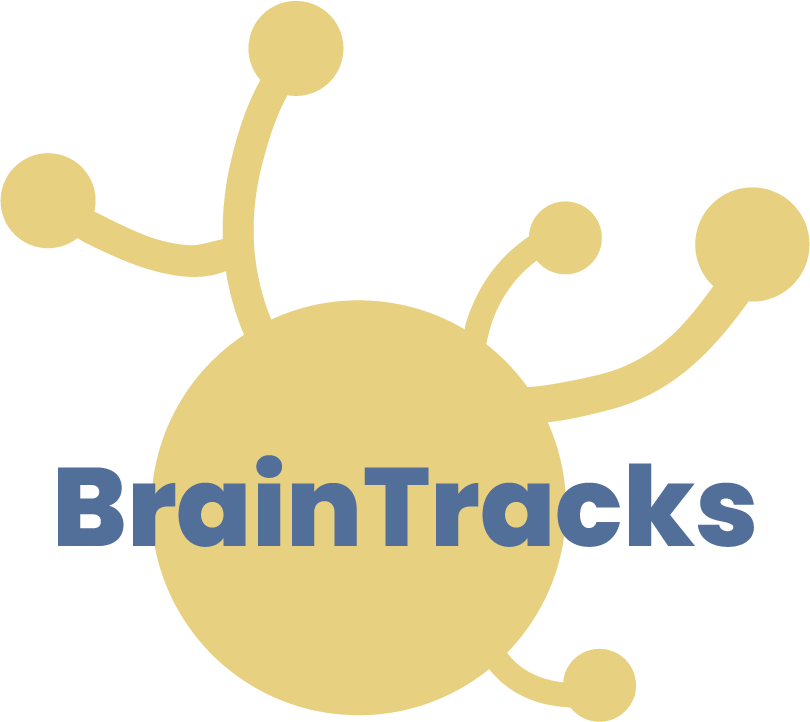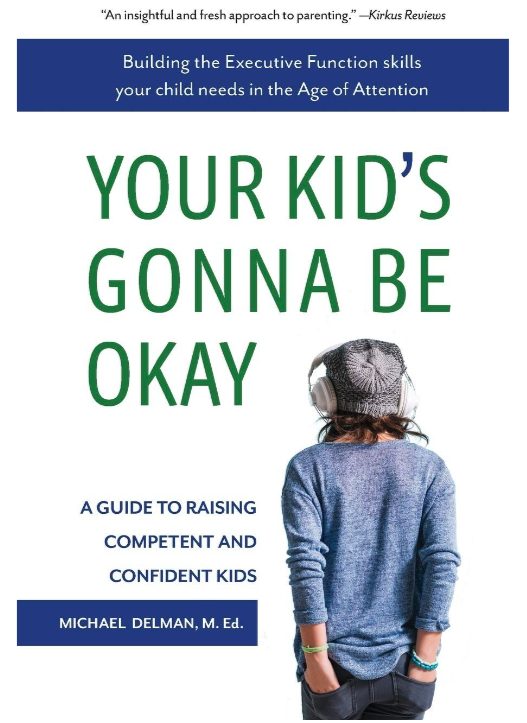Excerpt from Chapter 5
Learning to Decide: The Executive Suite and Strategies for the Unproductive Child
Welcome back to the fifth installment of our six-part blog series! If you're just joining us, be sure to catch up on our previous posts. If you have a student or child that has trouble getting work done, you won’t want to miss this post! In this installment, we address the strategies that adults can use to support an unproductive child.
Be sure to join us next week for another installment! Next week’s post will address strategies for metacgognition. If you have a student or child that has trouble monitoting their progress and assessing thier learning, you won’t want to miss this post!
Below, get a sneak peek with an exclusive excerpt from ©Your Kid’s Gonna Be Okay: Building the Executive Function Skills Your Child Needs in the Age of Attention. Reprinted here with the permission of author Michael Delman.
Your Kid’s Gonna Be Okay: Building the Executive Function Skills Your Child Needs in the Age of Attention book cover.
Getting Cozy with Covey: Principles of Time Management
To be successful on both specific projects and on the much broader project of living their lives fully and successfully, our children need to learn how to prioritize, how to create plans centered on their priorities, and how to execute those plans within the deadlines that the real world imposes on them. In his seminal work The 7 Habits of Highly Effective People, Stephen Covey shared a tool (see figure 16) that serves as a strong foundation for deciding what to get done when. His framework helps organize tasks by their urgency—how immediately something must be attended to—and importance, how valuable the activity is.
While this approach does not come naturally to most of us, it is even less intuitive for children. First, they are at the behest of adults who have more power and experience than they do. If a teacher tells a student to do something, it is unlikely to occur to a student, especially a younger one, that the assignment is not particularly important. For kids, it’s easy to have the “either/or” thinking of “important/not important” instead of the more nuanced view we have—and the teacher probably intended—that has a whole range, from “interesting to look at if you have time,” to “necessary to complete,” to “must be done at top quality.” In addition, with their less developed Executive Function skills, children may not have learned yet how to distinguish between the two different dimensions of urgency and importance. My older daughter, for instance, though motivated to do her best in school, bemoaned the lack of time she had for a major project in her Spanish class.
“Between the hour a night we have for calculus homework, another hour for history, and another hour that’s just for the Spanish homework—plus my theater classes—sometimes we can’t even start our projects until the night before! It makes no sense!” she complained.
“Give me the bigger picture,” I asked her.
“Well, after getting home between six and ten o’ clock because of auditions or rehearsals, plus homework from my academic classes, plus work in my theater arts classes, I just don’t have time to work on a project until the night before. And that’s true for everybody!” she said.
I ignored the “everybody” comment, knowing I’d never win that battle, and focused, instead, on her choices.“How many points are the homework assignments worth that you’re doing in Spanish each night?” I asked, suspecting that she was expending too much energy in the wrong places but wanting to hear it from her.
“I don’t know. Probably one to two points apiece.”
“And the project?”
“Fifty points.”
“Oh,” is all I said. I was trying to avoid making it obvious that I was going somewhere with this, so she wouldn’t shut down the conversation when I clearly had a point I wanted to make, a point about points, actually.
“What?” she said. “I know you’re thinking something. Just say it.”
“Nothing, really. I was just wondering how much it would cost you, points-wise, if you spent fifty minutes a night on the Spanish homework and put the ten minutes per night you’d be saving into brainstorming and researching for your project.”
“I don’t know. Probably I’d get about the same grade on the home- work. Okay, yeah, I know,” she said, somewhat annoyed with me but mostly with herself for her allocation of time, which she could see didn’t make a great deal of sense. She was caught in the urgent; I was trying to help her shift toward the important.
“Either way is understandable,” I assured her. “It’s just that, mathematically speaking, it seems that you’d do better in the class if you took a little time away from the small things and put that time into the one big thing so you don’t have to rush on it. You’d also have time to improve it at the end.”
“You know it’s annoying sometimes having a dad who is an Executive Function coach,” she said.
She recognized that her approach to the situation didn’t make sense and wanted to put more effort into the project; she just hadn’t yet come up with a solution. In talking it out, she came up with the idea of spending forty-five minutes per night on the homework so that she could do a “good enough” job on the nightly requirement, and then have fifteen minutes per night freed up to work on the project. Thus, by the time she reached the final night, she had completed much of the project and only needed to review it instead of rushing to draft and edit the entire thing in one or two days. What made it so difficult to see this in the first place was that she was caught up in tasks that were, indeed, urgent but that were not particularly important. In doing so, she was neglecting a task that was far more important but was not urgent, at least not yet.
Figure 16: The Covey Quadrants Framework
As figure 16 above shows, homework assignments due the next day, especially those that might not even be checked for a grade and that the teacher will review in class, are often mischaracterized. Their immediate due date does mean they are urgent. However, the lack of a grade, coupled with the teacher’s plan to review them with the class, also means that consequences will be minimal if your child consciously decides to do the work at a basic level instead of aiming for near perfection. These tasks, then, are in the third quadrant, Q3. While it is important for your child to do the homework because he needs to know if he has any questions for class, it would be foolish to spend too much time on this particular task at the cost of working on something more consequential. Homework is generally a “Quadrant 3” activity, urgent and necessary to complete, but not so important that it needs to be obsessed over.
For those assignments that are both urgent and important—Quadrant 1, in other words—it is imperative to get busy on them. The point value is high, and there won’t be another chance to get them done. Most students don’t have trouble understanding this category; it makes intuitive sense. Young people, as well as adults
with adhd, frequently inhabit Q1 because they tend to procrastinate, and they feel an adrenaline rush when they try to complete these high-stakes tasks as the window is closing. Unfortunately, in spite of their feeling a certain high from this kind of approach, work quality suffers. Many things that have become urgent didn’t have to be. They could have been planned out had the student started earlier and more methodically.
The trickiest category is Quadrant 2 (Q2), tasks that are important but are not screaming for attention because they are not due right away. These challenges—usually projects due a week or more out— require, first and foremost, an understanding of the slide from Q2 to Q1, the tendency of people to delay what is not urgent until it is urgent, even if it is important. The tool in the next section, “Planning . . . to Get It Done: Basic Project Management Skills,” provides an effective antidote to this problem.
The final category, Quadrant 4—that which is neither urgent nor important—is one that most of us, kids included, are willing to concede is not worth our time, but we do these things anyway. What drives us to these non-productive activities? First of all, they’re enjoyable; we are hardwired to enjoy certain things like adrenaline challenges (video games), and social connection (social media). These things are the equivalent of sugar, fat, and salt: things we like and that our ancestors needed to get as much as they could for survival, but that we have too much of today.
Not everything that we enjoy is Q4, thankfully. Some things, such as exercise and maintaining strong relationships, are restorative in nature and are Q2, important and only urgent if neglected. Q4 is more like having a lot of wine and a Netflix binge. When we are feeling a bit weak, typically because we have exhausted ourselves from too much time in Q1 fighting the fires of various crises, we are susceptible to retreating to Q4. Often, we created this Q4/Q1 loop because we didn’t take care of things when they were Q2 and not yet urgent.
Kids especially lack the maturity to see that they are behind in Q2. The lack of immediacy prevents them from realizing that “objects in the rearview mirror are closer than they appear.” By learning how to use the Covey quadrants and classify tasks right away, we can help our children begin to understand why it’s easy to get behind on projects. Once they understand the essential nature of projects—that they’re easy to ignore but carry a big price tag for doing so—we can teach our children the strategy of backwards planning explained in the next section.
Want to read more? Your Kid’s Gonna Be Okay is available for order through your favorite online bookstore. You can also return next week for another exclusive excerpt from the book!
Educators can help students build their Executive Function Skills, and BrainTracks can help! Learn more about BrainTracks’ school programs.
Head to our parent company’s site if you are looking for 1:1 Executive Function coaching.



